It is well known that various fashions from the past come back into the spotlight nowadays and it’s more alluring attributes are being exploited. A vintage item to an individual has a whole different meaning to other people.
There are many people who live in these times and feel remorse that they didn’t have the opportunity to be born in precedent times and experience history and they are thereby fascinated by the way the world appeared in the 50’s, 60’s and 70’s. Similarly, the fortunate ones who were born during that time will definitely welcome the opportunity to reconnect with the old times again by recreating such experience with retro and vintage items.
The word vintage spread at a very fast rate in the late period that many people are so much confused about what vintage really means. Some people use the term vintage to represent both retro as well as vintage items. However, there is a difference between the two because vintage items are not the same as retro.
A vintage item is a piece which is younger than hundred years, but is older than at least thirty years: as at today, the earliest period for vintage furniture will be 1987. This also implies that any item that was made in the 1980s can be considered as vintage-but not those ones that were made in the 1990s. Because the term is loosely defined and also depends majorly on the style and maker of the item, the expression is sometimes overused or used incorrectly. Vintage reproductions are recently manufactured pieces of item that were vintage-inspired. They have the look and feel of vintage items.
Retro is a kind of design or style that refers to previous fashion trends, particularly the vintage style. It is also known as vintage inspired or vintage look. However retro is different from vintage with respect to the appearance and the material used. Retro items have an updated and more polished look. It means that retro items are made with an old style or design but contemporary or new materials. Retro is mostly borrowed, reproduces or an imitated designs.
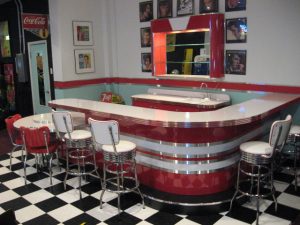
Many people do not know the differences that exist between vintage and retro items; however there is need for you to understand the differences between these terms so that you’ll be able to add value to yourself. Although both of them have similarities but there are differences which is important for you to know about the two words.
Vintage Furniture
The word vintage can be used to describe furniture which are made in the 1920s or later and must not be later than 30 years before the present year. It also refers to the age of the furniture rather than the style. People usually make this mistake by calling a modern-day dress from a fancy store ‘vintage’; however, it cannot be regarded as vintage unless it was made 30 years ago or earlier. Although it might have an old style, it cannot be referred to as vintage if it was manufactured in the last 30 years.
Now, in the year 2017, any item or furniture that is made between 1920 and 1987 can be referred to as vintage, and this does not mean everything have a vintage appeal. For instance, fur clothes which are very popular in the 1960s, and because they were made during this era too, they can be referred to as vintage. Most people find fur clothes to be fashionable despite the controversy about them since the 1970s. A regular blouse during 1950s is not as appealing when compared to a fur coat.
This is not limited to furniture only; vintage can also be used for clock, clothes and other ornaments such as lava lamps, cabinets, radios and jewelries which are made in the 1970s. The amazing part is that the word originates from the French word ‘vendage’, which means grape picked during a season and it was first used to describe an old wine.
Retro Furniture
Unlike vintage furniture or other items, retro does not refer to a specific time period during which they were created. However, retro relates to the style in which the items are made. Furniture which is made recently with the aim of imitating the fashion of the past can be referred to as retro. In the furniture industry, many companies try to bring back previous trends by creating furniture which was fashionable during the 1950s or 1960s. This furniture can only be referred to as retro and not vintage.
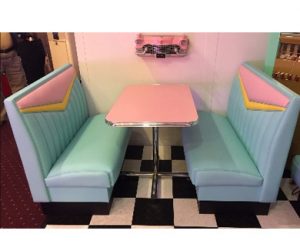
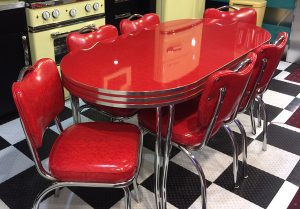
Retro furniture provides a way for vintage style and patterns to come back into the recent fashion industry. It also helps people to achieve an old fashion or vintage look without searching here and there for genuine vintage furniture. The word retro is mostly used when it comes to items which are made by imitating those from around 30 years ago. It can be used for anything which is made to copy items from the recent past. Just like the word ‘vintage’, ‘retro’ is not only applicable to furniture. Toys, music, and household goods can also be referred to as retro. For various kind of retro furniture used during the 50’s & 60”s Retro era, click on this link https://barsandbooths.com/
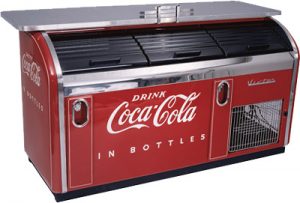

Points To Note
‘Retro’ and ‘vintage’ are terms which are used to describe a specific style of furniture or designed items. When it comes to definition, personal opinion as well as practical usage, both of them usually overlap each other.
Vintage furniture is designed and produced in the style or during the 1920-80s. the materials which are used to produce vintage clothing are old. Retro furniture imitates the style of vintage furniture with new materials. A retro style likewise has a more polished as well as a contemporary look.
‘Vintage’ mostly refers to the age, construction, pattern or the style. However, ‘retro’ only refers to the appearance of the furniture when it comes to the style or pattern.
Vintage furniture is authentic furniture while retro furniture is reproduced material or imitated. Because there is a similarity in the style, retro and vintage are almost the same.
The word ‘Vintage’ is usually associated with wine or other secondhand materials. However, ‘retro’ can be used to describe any revival or comeback trend.
“vintage” and “retro” function as nouns and adjectives, both of them likewise have Latin origins.

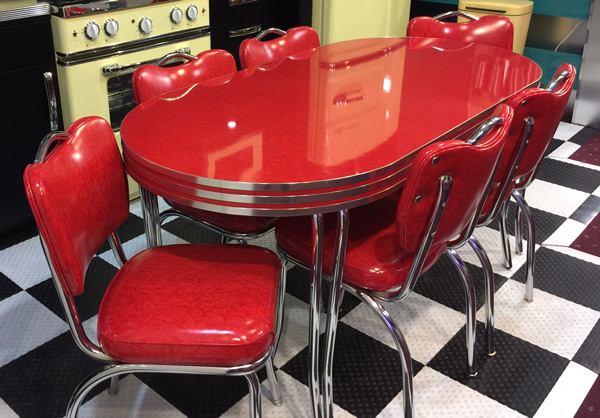
Recent Comments